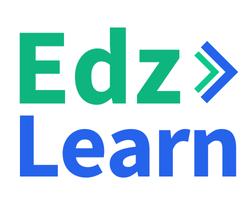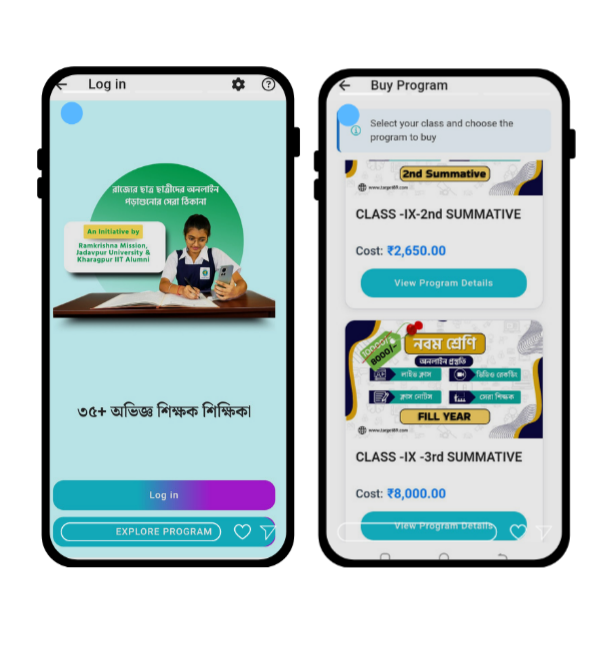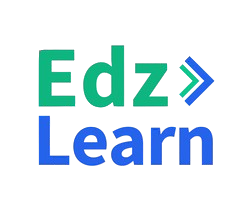Introduction – The Evolution of Learning Management Systems
In today’s fast-paced digital learning landscape, learners crave more than static content and inflexible modules. They want dynamic, responsive systems that adapt to their needs—just like interacting with a human tutor. That’s where Natural Language Processing (NLP) and chatbots come in, transforming traditional Learning Management Systems (LMS) into interactive, human-centric platforms.
As an expert in EdTech innovation, I’ve seen how NLP quietly powers real-time feedback, adaptive guidance, and personalized tutoring. Meanwhile, chatbots integrate with LMS ecosystems as always-on assistants, ready to clarify modules, share resources, and engage with learners in natural conversations.
In this blog, we’ll dive deep—over 3,000 words—into how NLP and chatbots work together to:
- boost learner engagement
- enhance accessibility
- personalize learning at scale
- free educators from administrative overload
- shape the future of digital education
Let’s unpack the technologies, integrations, use cases, challenges, and trends driving this transformation.
1. Understanding NLP and Chatbots: The Foundations
1.1 What is NLP?
Natural Language Processing (NLP) is the branch of AI that enables computers to understand, interpret, and generate human language. NLP underpins everything from chatbots to translation apps, voice assistants, and sentiment analysis. In an LMS, NLP allows systems to:
- Interpret questions typed or spoken by learners
- Analyze assignment text for grammar, clarity, and style
- Detect sentiment or confusion in messages
- Generate context-aware feedback and explanations
Capabilities include understanding intent, recognizing entities (e.g., “quiz,” “module two,” “deadline”), and forming grammatically correct responses. NLP anchors chatbots so they feel intelligent—not robotic.
1.2 What Are Chatbots?
A chatbot is a software agent that uses NLP to converse with users in natural language, via text or voice. In education, chatbots can:
- Answer FAQs (e.g., “When is the project due?”)
- Guide learners through course navigation (“I want to review module three.”)
- Provide hints or supplemental materials
- Deliver reminders, motivational messages, and feedback
- Pass complex queries to human mentors when needed
These virtual assistants fit seamlessly in LMS dashboards, mobile apps, or messaging tools—making learning feel like conversation, not coursework.
2. Benefits: Why NLP and Chatbots Matter in Modern LMS
2.1 Always-On Support Anytime, Anywhere
Learners no longer wait for stairwell conversations with instructors. Chatbots provide instant, 24/7 support—via web, mobile, or smart speakers. That means help is available during late-night study sessions, commutes, or weekends.
Example: A nurse reviewing a protocol at 2 AM can ask, “What’s the proper hand-washing technique duration?” and receive an immediate answer, without pinging a supervisor.
2.2 Personalized Learning Assistance
Chatbots powered by NLP assess learner behavior and performance in near real time. If a student is struggling, the bot can suggest relevant modules, videos, or tip sheets. Conversational nudges like “Need help with something?” foster accountability and reduce dropouts.
2.3 Instant Feedback on Assignments and Language
NLP can analyze short-answer responses, essays, code snippets, and technical posts. Platforms can highlight grammar issues, logical gaps, or coding errors, while providing corrections and examples. Students gain summary feedback within seconds, not days.
2.4 Improved Accessibility and Inclusion
Text-based chatbots assist learners with disabilities—especially those who can’t navigate complex menus or who process better in conversational formats. Voice-enabled NLP assistants support visually impaired users and those with motor difficulties.
2.5 Data-Driven Insights and Learning Analytics
Every learner-chatbot interaction provides rich metadata—questions asked, modules referenced, confusion trends. LMS admins mine this data to discover common pain points, design bottlenecks, or content gaps.
2.6 Scaling Human-Centric Support
Instead of hiring more tutors or TAs, organizations can scale learning support at near-zero cost. Chatbots automate referral, resolution, and escalation—empowering small teams to serve thousands.
3. AI Technologies at Work: How NLP Powers Chatbots in LMS
3.1 Intent Recognition
Chatbots use NLP to classify user queries into intents like “ask-deadline” or “request-help.” A well-trained system can differentiate between “Did I pass my quiz?” and “I want tips for the quiz.”
3.2 Named Entity Recognition (NER)
NER processes content like “module 5,” “final project,” or “JSON syntax.” By extracting these references, chatbots personalize gathered information or navigation.
3.3 Sentiment and Emotion Analysis
NLP detects frustration or confusion. A message like “I’m stuck again” could trigger a motivational response from the chatbot or automatically notify an instructor.
3.4 Dialogue Management and Contextual Flow
Instead of single-turn Q&A, chatbots maintain context across conversations. An AI agent recognizes follow-up queries like:
- “Okay, thanks. And how about section 2?”
- “What about mobile access?”
This contextual continuity boosts the human-like feel of conversations.
3.5 Generative AI for Feedback and Summaries
Advanced LMS engines may use large language models to summarize readings, explain complex concepts in simple terms, or generate practice questions.
4. Integration Architectures: Bringing Chatbots into LMS
4.1 Internal Chat Module
Some LMS platforms provide built-in chat widgets—right next to course navigation—fully integrated into workflows.
4.2 Third-Party Bots via APIs
Platforms like EdzLMS or Moodle can integrate external chatbot engines (Dialogflow, Rasa, or Microsoft Bot Framework). These bots connect via API to student data, content libraries, and dashboards.
4.3 Multi-Platform Availability
Chatbots can be accessible across Telegram, Microsoft Teams, Slack, and mobile companions—allowing learning conversations to follow learners across workflows.
4.4 ML-Driven Optimization
Machine learning models refine intent recognition over time based on user interactions. Administrators can review flagged queries and retrain models with more data.
5. Real-World Use Cases: Chatbots in Action
5.1 Onboarding Made Conversational
New employee chatbots guide learners through orientation courses with interactive questions and reminders. This personalized rollout improves completion rates by 30%.
5.2 Push Learning Support
In STEM courses, chatbots provide clarity on tricky problem-solving steps, linking glimpsed diagrams or calculators to learning materials.
5.3 Language-Driven Skill Path Guidance
In sales training, chatbots assess conversation simulation results and recommend micro-lessons on objection scripting or phrasing.
5.4 Continuous Compliance Checks
For regulated environments, chatbots ping learners to review policies, confirm completion, and provide refresher auto-responses.
5.5 Exam Preparation Coaching
Chatbots host quiz sessions, coach on weak areas, and sync with learning paths—making exam prep feel like a supportive study partner.
6. Benefits for Stakeholders at Every Level
6.1 For Learners:
- Autonomy through conversational interaction
- Learning becomes interactive and immediate
- Reduced cognitive load from navigating menus
6.2 For Educators:
- Less repetitive admin Q&A overhead
- Richer understanding of learner pain points
- Timely, modulated alerts when human intervention is needed
6.3 For Organizations:
- Scalable support without large hiring budgets
- Data-informed curriculum improvements
- Boosted learner outcomes and satisfaction
7. Challenges & Mitigations
| Challenge | Impact | Solution |
| Misinterpretations | Chatbots may misunderstand needs, frustrating learners | Continuous NLP retraining with real query data |
| Privacy Concerns | Chatbot logs reveal learner patterns | Encrypt logs, anonymize messages, and secure opt-ins |
| Maintaining Engagement | Chatbots can feel scripted and dull | Use persona design and randomized motivational messaging |
| Content Drift | System errors may point to outdated materials | Sync bot with CMS and review linked resources quarterly |
| Educator Adoption Hesitancy | Trainers may distrust AI | Offer transparency on model decisioning and include them in pilot testing |
8. Best Practices for Implementation
8.1 Design Chatbot Persona
Define tone, voice, persona traits, and boundaries. Is it witty, formal, encouraging, or fact-based? Tone consistency matters.
8.2 Launch Small with Pilot Cohorts
Start with a single course or department. Learn from early feedback, iterate, and scale out.
8.3 Prioritize High-Value Interactions
Focus chatbot coverage on highest-volume support areas: navigation, deadlines, assessments, and feedback.
8.4 Maintain Human Oversight
Ensure chatbots escalate to instructors or TAs when queries get complex or emotional.
8.5 Continuously Analyze & Refine
Track metrics like resolution time, escalation rates, user satisfaction, and learning outcomes. Use these to improve NLP models.
9. Future Trends to Watch
9.1 AI Tutors with Voice Interface
Voice assistants that can verbally guide learners through practice problems—ideal for hands-free desktop or lab contexts.
9.2 Emotionally Intelligent Bots
Bots that detect tone, sentiment, or fatigue and respond with empathy or encourage breaks.
9.3 Personalized Study Coaches
Bots that aggregate progress and remind users: “You were doing well on algebra—would you like a review quiz?”
9.4 Virtual Peer Group Connectors
When multiple learners ask similar questions, bots suggest live video study groups or discussion forums.
9.5 Cross-Platform Learning Diaries
Bots that bridge LMS with calendars, journals, or reminders—evolving into central learning companions.
Conclusion – Humanizing Learning at Scale
NLP and chatbots are quietly rewriting the formula for digital learning. No longer passive content delivery systems, modern LMS platforms are evolving into interactive, conversational companions—mimicking the responsiveness of human tutors.
By using NLP to interpret learner intent, chatbots offer support precisely when and how it’s needed. The result?
- Higher engagement
- Faster problem resolution
- Personalized learning journeys
- Enhanced data-driven insights
- More satisfied educators and learners alike
True innovation lies in making technology feel human. With careful implementation, chatbots become more than support agents—they become trusted guides on the learning journey.In the race to scale high-quality education, NLP-powered chatbots are not just smart; they’re essential for building LMS platforms that are as open and empathetic as live classrooms.














